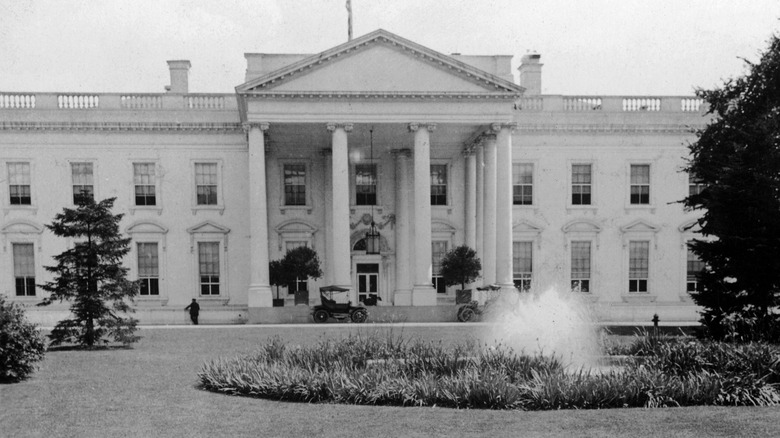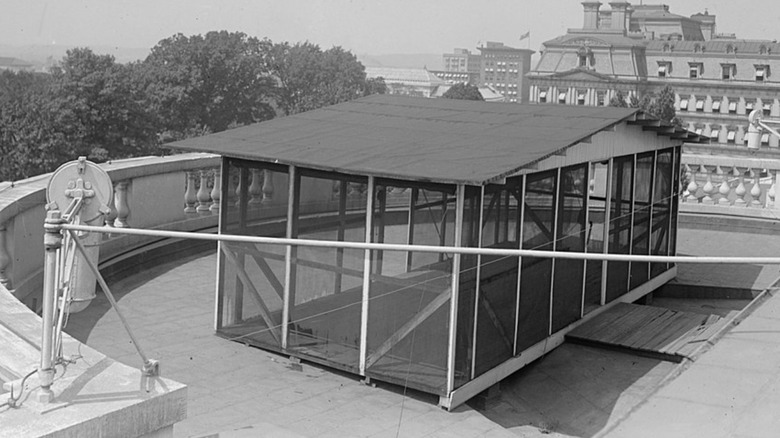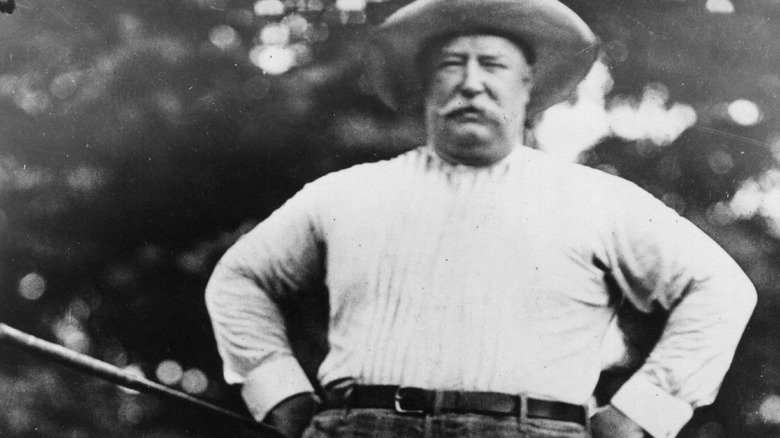Why The White House Once Had A Sleeping Porch
It's been suggested that the responsibilities that come with leadership should never let anyone so honored sleep easy, and that presumably goes double for anyone made leader of the free world. But presidents enjoy relaxation and their creature comforts as much as anyone. It's easy enough today for the White House, or anywhere that hosts a president, to provide a physically comfortable environment (peace of mind is up to them). In the days before modern electricity and air conditioning, however, the White House could be miserable.
Per The White House Historical Association, there were many methods employed by presidents over the years to try and combat the heat and humidity of Washington, D.C., most of them intermittently successful at best. The most effective trick was just to move in the summer. That was good enough for the likes of Abraham Lincoln, who retreated to a Gothic Revival cottage in the hills when the climate in D.C. became unbearable (per the National Parks Service). Other presidents dabbled in early methods of air conditioning. An elaborate and impractical system of pumping air filtered through ice-soaked cotton eased James Garfield's passing in 1881, but 18 years later, William Howard Taft decided to try an old southern method for keeping cool: the sleeping porch.
What is a sleeping porch?
According to Southern Living, the sleeping porch was a common fixture in homes during the 19th and early 20th centuries. Today, we might call it a covered deck, since that's essentially what it was: a deck or a balcony on an upper story of the house, usually built in a corner, with screened windows. Larger sleeping porches could run from one end of a house to another for maximum exposure to cross breezes. At night, families would set up beds on the sleeping porch and rest in the relative comfort of "outside" air.
Before the invention of centralized air conditioning, sleeping porches were highly valued ways to beat the heat, particularly in the American South. Besides making it easier to sleep, the rooms were seen as a health benefit; the breezes filtering through the screen windows were thought to counteract the spread of diseases like tuberculosis. Even today, when they're no longer needed to get to a tolerable temperature before bed, some homes retain sleeping porches (or a reasonable proximity thereof) for the charm.
The White House sleeping porch was short-lived
The sleeping porch wasn't the first method of air conditioning that President William Howard Taft brought to the White House. According to The White House Historical Association, he initially tried a system of fans that blew chilled air from blocks of ice stuck in the attic throughout the mansion. When that didn't work, he tried the sleeping porch. It was built on the roof of the White House; surviving photos make it look like a somewhat improvised structure, with no permanent furniture or decoration. But it seems to have done the job, at least for Taft.
His successor left the sleeping porch up at least as late as 1920, but Woodrow Wilson didn't use it. He initially claimed that he didn't need any artificial tricks to keep cool. But within his first year as president, Wilson found the summer climate in Washington, D.C. too oppressive to overcome through attitude alone. Instead of availing himself of Taft's sleeping porch, Wilson took to using tents on the outskirts of the Rose Garden. Air conditioning as we know it was first installed in 1930 and replaced during the Truman administration.
While Taft's sleeping porch went unused by later presidents, it was the impetus for a later addition to the White House. During the Coolidge administration, the sleeping porch gave way to the Solarium, which is still there to this day.


